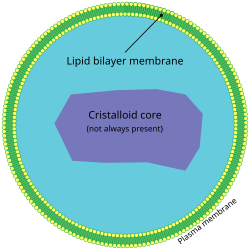Acatalasia
| Acatalasia | |
|---|---|

| |
| Synonyms | Takahara's disease |
| Pronounce | |
| Specialty | Genetics, Hematology |
| Symptoms | Oral ulcer, Gangrene, Periodontal disease |
| Complications | N/A |
| Onset | Usually in childhood |
| Duration | Lifelong |
| Types | N/A |
| Causes | Genetic mutation in the CAT gene |
| Risks | Increased risk of oral infections |
| Diagnosis | Genetic testing, Enzyme assay |
| Differential diagnosis | Hypocatalasia, Diabetes mellitus |
| Prevention | None |
| Treatment | Oral hygiene, Antibiotics for infections |
| Medication | N/A |
| Prognosis | Generally good with proper management |
| Frequency | Rare, more common in Japan |
| Deaths | N/A |
Acatalasia is a rare autosomal recessive genetic disorder characterized by the absence or very low levels of the enzyme catalase. This enzyme is crucial for the breakdown of hydrogen peroxide into water and oxygen. The deficiency of catalase leads to the accumulation of hydrogen peroxide, which can cause damage to cells and tissues.
Signs and Symptoms
Individuals with acatalasia may be asymptomatic or present with a range of symptoms. Common symptoms include:
- Oral ulcers
- Gangrene of the gums
- Increased susceptibility to infections
- Delayed wound healing
Genetics
Acatalasia is inherited in an autosomal recessive manner, meaning that an individual must inherit two copies of the defective gene, one from each parent, to manifest the disorder. The gene responsible for acatalasia is the CAT gene, which provides instructions for making the enzyme catalase.
Diagnosis
Diagnosis of acatalasia is typically made through:
- Blood tests to measure catalase activity
- Genetic testing to identify mutations in the CAT gene
Treatment
There is no specific treatment for acatalasia. Management focuses on preventing and treating symptoms and complications. This may include:
- Good oral hygiene to prevent oral ulcers and infections
- Prompt treatment of infections with antibiotics
- Regular monitoring by healthcare professionals
Epidemiology
Acatalasia is an extremely rare disorder, with higher prevalence reported in certain populations, such as in Japan and Switzerland. The exact incidence and prevalence are not well-documented due to the rarity of the condition.
History
The disorder was first described in 1948 by Japanese scientist Takahara and is sometimes referred to as Takahara's disease.
See Also
External Links
-
This article is a genetic disorder stub. You can help WikiMD by expanding it!
Transform your life with W8MD's budget GLP-1 injections from $125.
W8MD offers a medical weight loss program to lose weight in Philadelphia. Our physician-supervised medical weight loss provides:
- Most insurances accepted or discounted self-pay rates. We will obtain insurance prior authorizations if needed.
- Generic GLP1 weight loss injections from $125 for the starting dose.
- Also offer prescription weight loss medications including Phentermine, Qsymia, Diethylpropion, Contrave etc.
NYC weight loss doctor appointments
Start your NYC weight loss journey today at our NYC medical weight loss and Philadelphia medical weight loss clinics.
- Call 718-946-5500 to lose weight in NYC or for medical weight loss in Philadelphia 215-676-2334.
- Tags:NYC medical weight loss, Philadelphia lose weight Zepbound NYC, Budget GLP1 weight loss injections, Wegovy Philadelphia, Wegovy NYC, Philadelphia medical weight loss, Brookly weight loss and Wegovy NYC
|
WikiMD's Wellness Encyclopedia |
| Let Food Be Thy Medicine Medicine Thy Food - Hippocrates |
Medical Disclaimer: WikiMD is not a substitute for professional medical advice. The information on WikiMD is provided as an information resource only, may be incorrect, outdated or misleading, and is not to be used or relied on for any diagnostic or treatment purposes. Please consult your health care provider before making any healthcare decisions or for guidance about a specific medical condition. WikiMD expressly disclaims responsibility, and shall have no liability, for any damages, loss, injury, or liability whatsoever suffered as a result of your reliance on the information contained in this site. By visiting this site you agree to the foregoing terms and conditions, which may from time to time be changed or supplemented by WikiMD. If you do not agree to the foregoing terms and conditions, you should not enter or use this site. See full disclaimer.
Credits:Most images are courtesy of Wikimedia commons, and templates, categories Wikipedia, licensed under CC BY SA or similar.
Contributors: Prab R. Tumpati, MD, Prabhudeva
